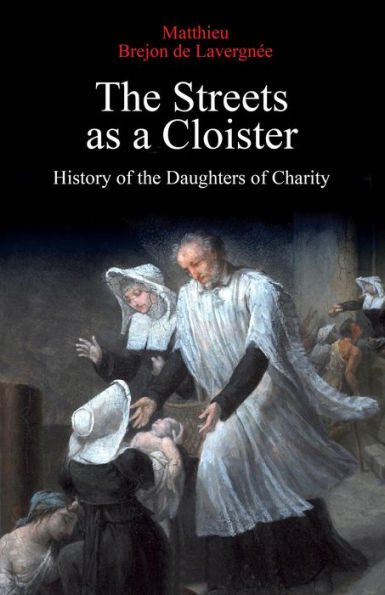The Streets as a Cloister
The Daughters of Charity are today the largest community of Catholic women, with 15,000 sisters in about 100 countries. They devote their lives to serving the poorest in hospitals, schools, and care centers for homeless or migrants, as well as working to promote social justice. Each year, millions of Miraculous Medals are sent all over the world from their motherhouse in Paris, where Catherine Labouré had visions of the Virgin Mary in 1830.
Until now, however, the history of the Daughters of Charity has been almost wholly neglected. The opening of their central archives, combined with access to many public and private archives, has finally allowed this to be remedied.
This volume, the fruit of several years' work, covers the history of the Company from its foundation by Vincent de Paul and Louise de Marillac as a confraternity of young women to the suppression of the order during the French Revolution. The study, at the juncture of women's history and religious history, shows how much the Daughters of Charity contributed to the emergence of a new and ambiguous status in post-Tridentine society: neither cloistered nuns nor married women, but "seculars." The Company has certainly offered a framework that enabled many resolute women to lead lives out of the ordinary, taking young peasant women to the royal court, intrepid hearts to Poland, and, more generally, generous souls to the "martyrdom of charity" among the poor and the ill.
1139446394
Until now, however, the history of the Daughters of Charity has been almost wholly neglected. The opening of their central archives, combined with access to many public and private archives, has finally allowed this to be remedied.
This volume, the fruit of several years' work, covers the history of the Company from its foundation by Vincent de Paul and Louise de Marillac as a confraternity of young women to the suppression of the order during the French Revolution. The study, at the juncture of women's history and religious history, shows how much the Daughters of Charity contributed to the emergence of a new and ambiguous status in post-Tridentine society: neither cloistered nuns nor married women, but "seculars." The Company has certainly offered a framework that enabled many resolute women to lead lives out of the ordinary, taking young peasant women to the royal court, intrepid hearts to Poland, and, more generally, generous souls to the "martyrdom of charity" among the poor and the ill.
The Streets as a Cloister
The Daughters of Charity are today the largest community of Catholic women, with 15,000 sisters in about 100 countries. They devote their lives to serving the poorest in hospitals, schools, and care centers for homeless or migrants, as well as working to promote social justice. Each year, millions of Miraculous Medals are sent all over the world from their motherhouse in Paris, where Catherine Labouré had visions of the Virgin Mary in 1830.
Until now, however, the history of the Daughters of Charity has been almost wholly neglected. The opening of their central archives, combined with access to many public and private archives, has finally allowed this to be remedied.
This volume, the fruit of several years' work, covers the history of the Company from its foundation by Vincent de Paul and Louise de Marillac as a confraternity of young women to the suppression of the order during the French Revolution. The study, at the juncture of women's history and religious history, shows how much the Daughters of Charity contributed to the emergence of a new and ambiguous status in post-Tridentine society: neither cloistered nuns nor married women, but "seculars." The Company has certainly offered a framework that enabled many resolute women to lead lives out of the ordinary, taking young peasant women to the royal court, intrepid hearts to Poland, and, more generally, generous souls to the "martyrdom of charity" among the poor and the ill.
Until now, however, the history of the Daughters of Charity has been almost wholly neglected. The opening of their central archives, combined with access to many public and private archives, has finally allowed this to be remedied.
This volume, the fruit of several years' work, covers the history of the Company from its foundation by Vincent de Paul and Louise de Marillac as a confraternity of young women to the suppression of the order during the French Revolution. The study, at the juncture of women's history and religious history, shows how much the Daughters of Charity contributed to the emergence of a new and ambiguous status in post-Tridentine society: neither cloistered nuns nor married women, but "seculars." The Company has certainly offered a framework that enabled many resolute women to lead lives out of the ordinary, taking young peasant women to the royal court, intrepid hearts to Poland, and, more generally, generous souls to the "martyrdom of charity" among the poor and the ill.
59.99
In Stock
5
1

The Streets as a Cloister

The Streets as a Cloister
eBook
$59.99
Related collections and offers
59.99
In Stock

Product Details
| BN ID: | 2940162484172 |
|---|---|
| Publisher: | New City Press NY |
| Publication date: | 05/11/2021 |
| Sold by: | Barnes & Noble |
| Format: | eBook |
| File size: | 13 MB |
| Note: | This product may take a few minutes to download. |
About the Author
From the B&N Reads Blog
